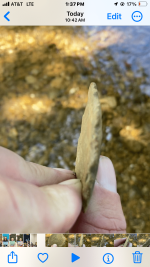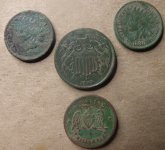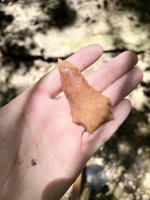Pacivilwarluke
Sr. Member
- Feb 15, 2013
- 270
- 441
- Detector(s) used
- xp deus
- Primary Interest:
- Other
Colonial trashpit diggin' and river walkin'
Yesterday it was kinda yucky out ( but cool, only the low 80s) in the lowcountry so I decided to go trashpit digging! I spent about one and a half hours digging one out and found some decent colonial relics! The highlight was 96 pipe stems mostly dating to the mid 1700s ( that makes about 250-300 from this pit so far) but I found a few other things, I got a tiny thimble and another stud backed gilted rosette, a musketball, a brass ring, and some piece of iron that needs IDing. Of course ghere was tons of pottery too, but I only picked up the pretty pieces. Brick, oyster, bone and nails are everywhere too. It reminds me of something from a fireplace/hearth for some reason. I also found some things walking a river down here, the highlight being the neck and lip of a black glass mallet or onion bottle but I also got two more necks that are proabbly mid 1700s with really crude lips but they aren't black glass. Also, one of the clay pipes has an 8 in it, any idea? Size, or makers mark?
Yesterday it was kinda yucky out ( but cool, only the low 80s) in the lowcountry so I decided to go trashpit digging! I spent about one and a half hours digging one out and found some decent colonial relics! The highlight was 96 pipe stems mostly dating to the mid 1700s ( that makes about 250-300 from this pit so far) but I found a few other things, I got a tiny thimble and another stud backed gilted rosette, a musketball, a brass ring, and some piece of iron that needs IDing. Of course ghere was tons of pottery too, but I only picked up the pretty pieces. Brick, oyster, bone and nails are everywhere too. It reminds me of something from a fireplace/hearth for some reason. I also found some things walking a river down here, the highlight being the neck and lip of a black glass mallet or onion bottle but I also got two more necks that are proabbly mid 1700s with really crude lips but they aren't black glass. Also, one of the clay pipes has an 8 in it, any idea? Size, or makers mark?
Attachments
Upvote
12


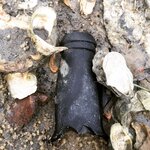
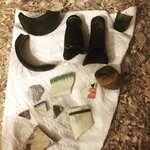
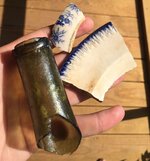
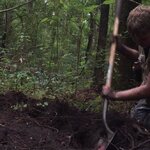
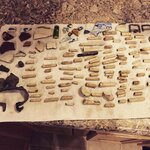
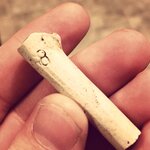
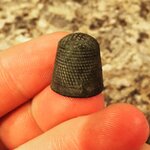
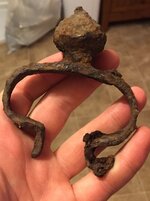
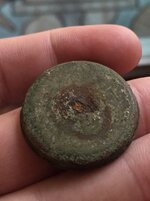
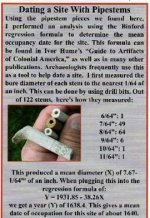

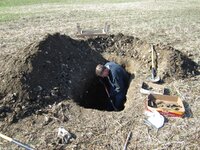
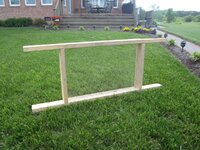
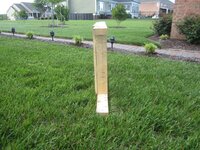
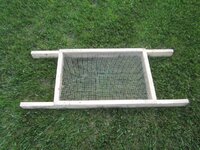
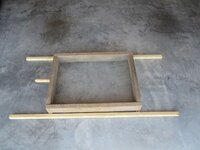
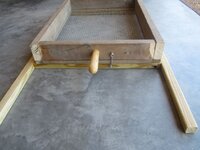
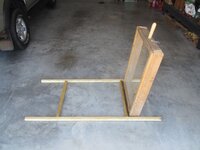


 I do know there are more in the area, because I've detected around them ( that's how I found them) and I dig pipe stems, ceramics frags, glass, tons of nails in certain areas and hear lots of iron. The little colonial kettle came out of this area along with two coppers lots of buttons rosetee musketballs show buckle frags and the like. Thanks for all the helpful info!
I do know there are more in the area, because I've detected around them ( that's how I found them) and I dig pipe stems, ceramics frags, glass, tons of nails in certain areas and hear lots of iron. The little colonial kettle came out of this area along with two coppers lots of buttons rosetee musketballs show buckle frags and the like. Thanks for all the helpful info!


